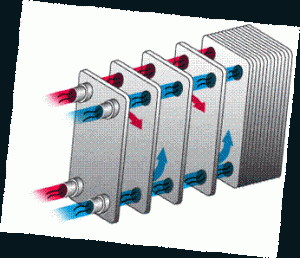Compressed Air – definitely greener!!
To calculate the magnitude of the opportunities that exist to save electrical power costs in your compressed air system, it is important to identify the electrical cost of compressed air.
Direct cost of pressure
Every 1 Bar increase of pressure in a plant system requires about 5% more power to produce.
Indirect cost of pressure
System pressure affects air consumption. The air system will automatically use more air at higher pressures. If there is no demand in productivity, air is wasted, Increased air consumption caused by higher than needed pressure is called artificial demand. Also remember that the leakage rate is significantly reduced at lower pressure. The magnitude of the above is solely dependent on the ability of the compressor control to translate reduced airflow into lower electrical power consumption.
Typically air demand in a plant varies widely throughout the day. In addition, fluctuations can occur from weekday-to-weekend, season-to-season and shift-to-shift. Pressure requirements can also change from machine-to-machine or from one application to another.
You need someone to evaluate your unique, often complex requirements, variable speed compressors can efficiently and reliably handle the varying air demand found in most plant air systems.
These compressors speed up and slow down to match air supply to air demand as it fluctuates.
The right variable speed controller in your compressor in the right application delivers significant energy savings and a stable, consistent air supply.
We developed our own unique controller that will guarantee a 20% saving on your compressed air consumption
Implementing heat recovery
The heat generated by air compressors can be used effectively within a plant for space heating and/or process water heating. Considerable energy savings result in short payback periods.
Process heating:
Heated water is available from units equipped with water-cooled oil coolers and after coolers. The heated cooling air from the compressor package is ducted to an area that requires heating. When space heating is used in the winter, arrangements should be made in the ductwork to return some of the heated air to the compressor room in order to maintain a 25°C room temperature. This ensures that the air discharged is at comfortable levels. Heat recovery is particularly effective when the primary air compressor package is an oil cooled rotary screw type. RESSA has developed an “AIR-INTELLIGENCE” System that monitors all of the above and can be downloaded onto a computer for analysis
Heat Exchange – heating and cooling ….. absolutely 100% free!
- When material such as liquids or gasses need to be cooled or he
 ated in a hurry, but would not be economical to chill or heat the material by refrigeration, electrical elements or chemical means, a heat exchanger will be implemented within the system or pipe line affected.
ated in a hurry, but would not be economical to chill or heat the material by refrigeration, electrical elements or chemical means, a heat exchanger will be implemented within the system or pipe line affected. - A heat exchanger is a device used to passively transfer heat from one material to another. These materials may be liquid or gaseous, depending on the situation in which the heat exchanger is being used.
- There are many models and types of heat exchangers, but they essentially work based on the laws of thermodynamics. One of those laws states that when an object is heated, the heat energy contained within the object will diffuse outward to the surrounding environment, until the heat energy in the object and the environment have reached equilibrium.
Sustainability
 Ice Thermal Storage Air Conditioning Systems
Ice Thermal Storage Air Conditioning Systems
Thermal Energy Storage allows the collection and storage of energy during low cost times of the day and gives immediate access to this energy in peak periods when energy would normally be more expensive. This reduces significantly energy costs for municipalities, industry and other energy customers.
http://www.ide-snowmaker.com/thermal-energy-storage/
- Like storing energy in a battery
- Reduced peak energy consumption and electric bill
- Lower the total operating cost to the owner and lower the peak loading on the power grid
- Reduce carbon footprint greatly
- 10% improvement in system efficiency
- Improve indoor air quality
- Estimated commercial payback period 2 – 3 years.
Industrial Water Treatment Solutions
including: Acid Mine Drainage, Cooling Tower Blowdown Treatment, FLD (Flue Gas Desulfurization), Refining Waste Water, CSG and ZLD
http://www.ide-tech.com/iwt/power-petrochemical/cooling-tower-blowdown-treatment/
ZLD (Zero Liquid Discharge) is a brilliant technique whereby a closed loop cycle is used and a high volume of water made available for reuse by means of using thermal evaporation and crystallization. http://www.ide-tech.com/iwt/zld/